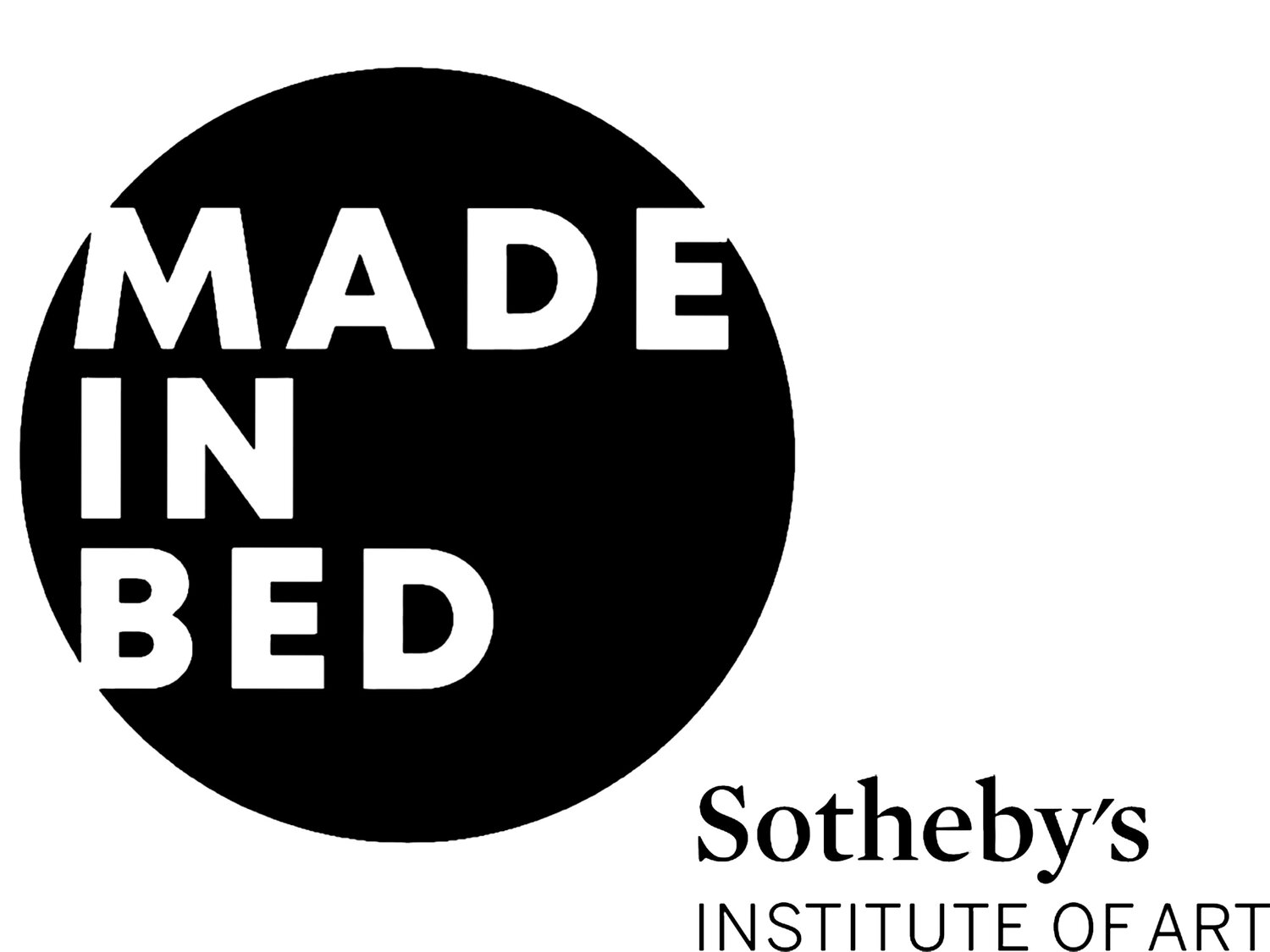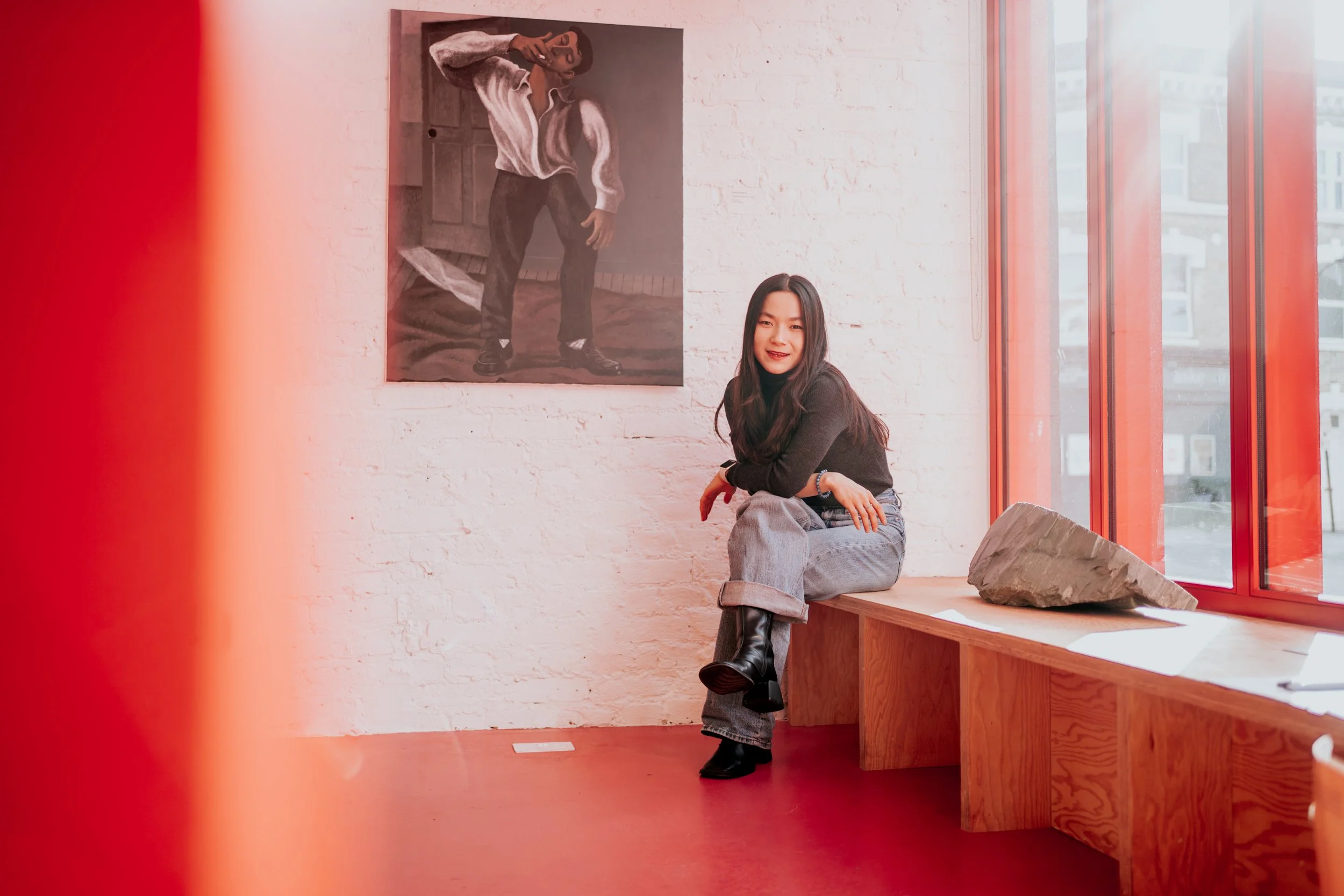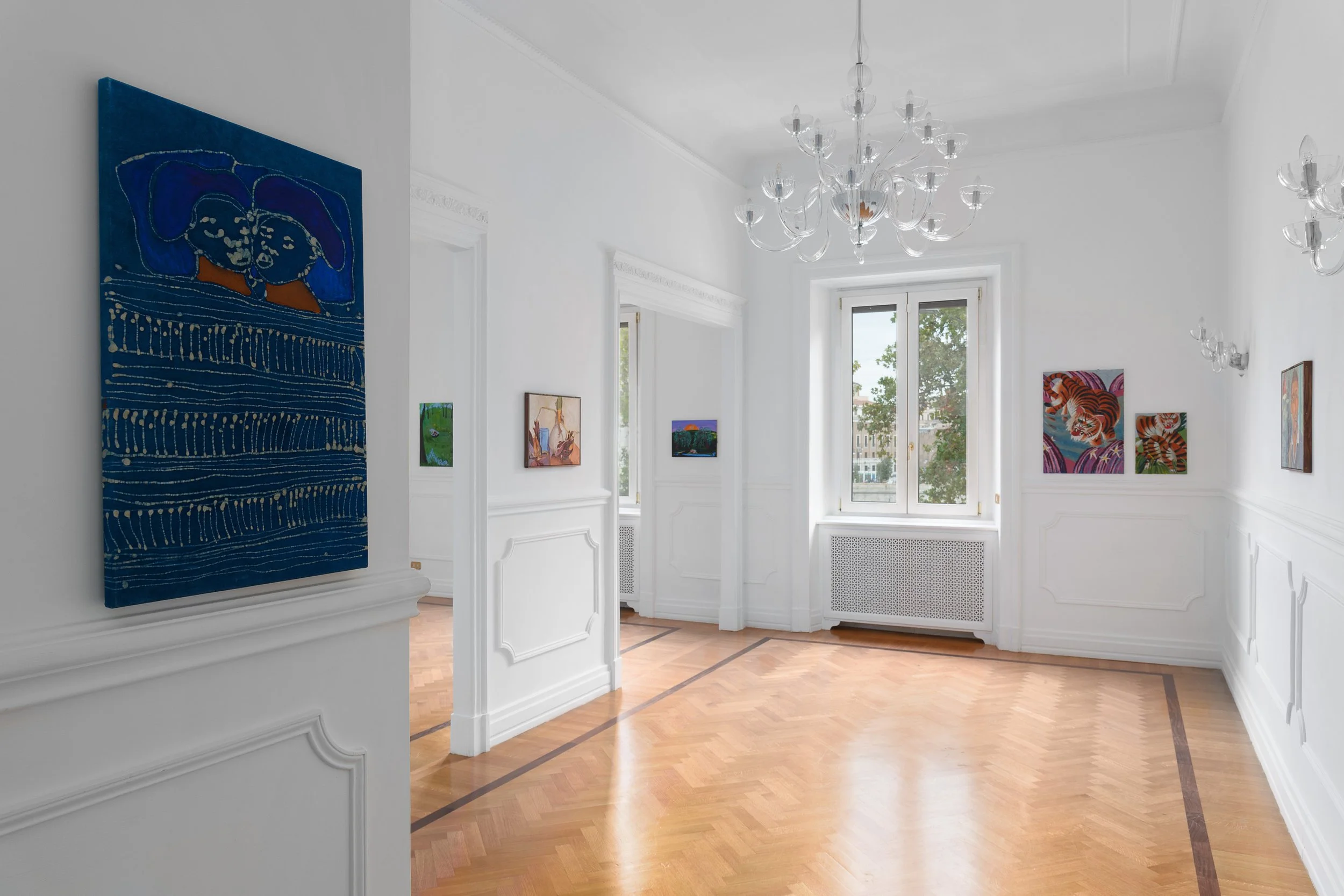MADE IN BED in Conversation with Zhimin (Gem) Zhang
Zhimin (Gem) Zhang is a gallerist, curator, and the Founder and Director of Willow Art Space, a London-based curatorial platform established in 2022. Dedicated to supporting young and underrepresented artists from diverse backgrounds, Willow has grown into a vibrant space for collaboration and exchange, connecting people through the shared experience of art.
Born in Wuhan, China, Zhimin moved to the UK in 2017 to study Marketing at the University of Liverpool, later earning an MA in Art and Cultural Enterprise from Central Saint Martins. Her background bridges business and art, giving her a distinctive perspective on how creativity and enterprise can coexist. In 2020, she received the UK Young Innovator Award, a recognition that foreshadowed her approach to building inclusive, forward-thinking art ecosystems.
In conversation with MADE IN BED, Zhimin reflects on her journey from business school to founding her own curatorial platform, and why meaningful relationships lie at the heart of her practice.
Portrait of Zhimin Zhang. Courtesy of Willow Art Space.
Alexis Kleeman: How did Willow Art Space come into being, and how has your own journey shaped the way you curate today?
Zhimin (Gem) Zhang: I actually started my career working at startups before fully entering the art world in 2022. My academic background is in marketing, which might seem unrelated, but I’ve always seen that as a strength. It allows me to approach curation with an emphasis on interpersonal relations and the emotional impact of art, rather than purely academic frameworks. My curatorial practice is influenced by colleagues and friends from different fields, both artistic and academic. This has heavily shaped my philosophy as a curator, giving me a penchant for exhibitions that invite personal interpretation, are not overly academic, and remain accessible to a broad audience while staying true to the artist’s intention.
When I first started Willow, it was a strictly digital platform. I saw it as a way to learn about art. The most significant expense was really my time, and I didn’t pay myself anything for the first few years. Now that I have a side job, I can sustain myself living in London, which gives me the freedom to work only with artists I genuinely love and admire. From the very beginning, Willow has been a journey of learning and growth—and now, looking back, I can see the path much more clearly. Many of the emerging artists I worked with early on are now expanding their careers and collaborating with established galleries. It makes me really happy to see that, and I’m grateful to have played a small part in their journey. It feels like we’re growing together.
AK: Why did you choose to be a curator? Was there a particular exhibition or experience that inspired you to pursue this career?
ZZ: I discovered curation organically, by helping friends curate their online presence, and then decided to pursue it professionally. The inspiration came not from an institutionalized perspective on art and its display, but from the people and the environment. A fundamental experience was walking the Camino de Santiago last year for my birthday. Upon returning, I curated the exhibition Homo Viator, funded by UAL’s Pitch It program and hosted by Noiascape.
The exhibition explores the idea of the human being as an eternal traveler across time and space. It is a journey that involves rest-and-repeat hiking and cultivating deep inner reflection. The journey of hiking, from young children to the elderly, inspired my philosophy of accessible and community-focused curation because it is a journey for everyone.
Once I have the concept, I begin searching for artists whose work visually and thematically reflects it — in the most diverse ways possible. In this exhibition, for example, the participating artists explore intersections of daily life, myth, imagination, gender, and personal growth. The exhibition also focused on community engagement and interactive workshops.
Homo Viator exhibition workshop. Courtesy of Willow Art Space.
AK: If you could sum up your curatorial philosophy in a sentence, what would it be?
ZZ: As a curator, I always start with the concept. It may be inspired by a personal experience, a story I’ve heard, or something I’ve read. For example, I prioritise the character of artists I work with over the aesthetic value of their work. I search for like-minded individuals with multi-disciplinary knowledge who want to use an artistic framework to reach a broader audience. Although I curate the exhibitions, the philosophy of Willow Art Space is clear; it is not about me. The mission of Willow Art Space is to help people learn and understand complex ideas, build communities, and provide a format for different disciplines—both art and academic—to interact and appreciate what artists are producing and sharing with those around them.
Our collaborative model is unique: Willow Art Space is a curatorial platform without a permanent physical location. Instead, we collaborate with galleries internationally to create opportunities for artists to be seen across the UK, China, and Europe. In today’s climate, many galleries are embracing such collaborative approaches—something I have personally observed and find increasingly valuable. The focus of my practice is to work with emerging artists on digital curations and, when possible, collaborate with third parties to provide artists with a physical display space. I enjoy meeting artists, learning how they view their work, and love how authentic they are as people.
AK: Let’s talk about your recent show with Andrea Festa Gallery. How did the idea come about, and what kinds of conversations or emotions do you hope it sparks?
ZZ: Andrea Festa Gallery is based in Rome. Together, we presented the work of seven artists: Mary De Vincentis, Sola Olúlode, Valdrin Thaqi, Elias Njima, Lisa Ivory, Zhang Shangfeng, and Ralf Kokke. The exhibition features 14 paintings, a medium in which I am most confident and comfortable working. Working with Andrea has been remarkably fluid, as we are drawn to the same group of artists. This shared sensibility has made the curatorial process smooth and intuitive. Being based in two locations allows us to combine our resources and insights to present the show at its best. Andrea oversees the European promotion, while I focus on sharing it within my UK and Chinese networks.
I first became interested in the concept of “Not too far, not too close” through the biological idea of homeostasis, which refers to the state of steady internal physical and chemical conditions maintained by living systems. For a long time, I have been pursuing this state of balance. “Not too far, not too close” is just a more poetic way of describing it. To achieve this equilibrium, we must question where we are at this very moment, and where we are heading next. It requires acute awareness and consciousness. This concept can be applied to many aspects of life, in relationships, study, and business.
Installation View of Not too far, not too close. Courtesy of Willow Art Space.
AK: How do you view London’s curatorial landscape, and what has your experience been like as a Chinese curator living in London? How has that influenced your curatorial vision?
ZZ: London is incredibly diverse, with so many small, emerging, and experimental exhibitions and events happening all the time. That’s also one of the reasons I chose to move here. The city constantly inspires me to expand my practice beyond oil painting, into photography, performance, and other forms of expression, which I’m currently exploring.
As a Chinese curator, I have the advantage of language and networks, which allow me to introduce fresh, often underrepresented works by Chinese artists who have never physically shown here before, and I’ll continue doing so.
At the same time, I’m aware that I don’t quite fit into the mainstream, compared with, say, a white, middle-class male curator born here. But being in that in-between position keeps me curious and open to both cultures. It helps me better understand emerging artists.
In practice, though, I don’t really care whether an artist is Chinese or from anywhere else. What matters to me is whether their work can spark meaningful conversations, remind audiences of something essential, or offer them a new way of seeing.
AK: Willow Art Space often collaborates internationally; how do you approach building and sustaining those cross-cultural dialogues or partnerships?
ZZ: Organically, the focus is to create a community that relies on each other and is open to collaboration. This encourages cross-cultural dialogues and partnerships that endure and can be relied upon for future projects and community contributions. Diversity does not need to be forced; if you are open, creators from diverse backgrounds will come to work with you.
If I go back to my second exhibition, The Invisible Clue, another one I’m very proud of. Logistically, it involved seven artists, which was quite tricky to manage as I needed to interview each of them to really understand the stories behind their creations. But composition-wise, all the works together conveyed a subtle thread—an “invisible clue” connecting them. The show explored both external environments, such as the hidden beauty within ordinary objects and the grandeur of mountains and hills, and internal reflections on fleeting moments and emotions. A few Chinese artists from that show later began working with galleries in the West, and Elias, who is originally from Switzerland, also had a solo exhibition in China. Many of them are now collaborating with larger galleries and taking part in more exhibitions, which feels incredibly fulfilling.
Poster of The Invisible Clue. Courtesy of the Willow Art Space.
AK: How do you see the future of curation evolving? Do you think conversations around sustainability, inclusivity, and diversity will reshape how curators work?
ZZ: Looking back, my taste hasn’t changed much. The very first artists I shared on Instagram included Andie Dinkin, Lian Zhang, Ginny Casey, and Chioma Ebinama, whose work I still love today. They’re now more established, but even then, I was drawn to their distinctive voices.
The future of curation and its sustainability relies heavily on factors such as shipping waste, transportation emissions, and digital exhibitions. Inclusivity is also vital for the future of curation and exhibition planning. Preserving the artist's integrity and the work's open-mindedness is also essential for the future of exhibitions and the role of the curator; no artist wants to work with a community that does not approach their work with an open mind and a willingness to interpret.
Willow Art Space remains an online platform that collaborates with physical galleries and continues to evolve with the art world. We don’t have our own physical space in London. I’m not particularly eager to open a permanent venue. It would tie me to one specific place, and I really enjoy working with different galleries around the world at the moment. Besides, so many galleries already have their own spaces. Why add another, when we could keep an open mindset and work together instead?
Many thanks to Zhimin (Gem) Zhang on behalf of MADE IN BED.
Alice Kim, Interviews Co-Editor, & Alexis Kleeman, Contributing Writer, MADE IN BED
Installation View of Not too far, not too close. Courtesy of Willow Art Space.
Noiascape, an organisation with which Willow Art Space often works, prioritises community outreach events and workshops. Community is frequently neglected in the fine art world. This partnership aims to make the fast fashion waste methods of the art world a thing of the past, always prioritising the community and interpersonal relationships in their curation practices.
Willow Art Space continues its mission of curatorial exploration of the intersections of art, social science, and the humanities. It positions exhibitions as tools for knowledge-sharing, cultural reflection, social awareness, and the support of emerging artists' careers.
Noiascape and Willow Art Space Limited presented a new exhibition, titled Cure-all, in partnership with Relish Curation, from October 23 to November 1 at Noiascape, 79 Askew Rd.






